Article Source: 36Kr
Author: Fantan
It's no wonder it's you, Musk, indeed making a big move.
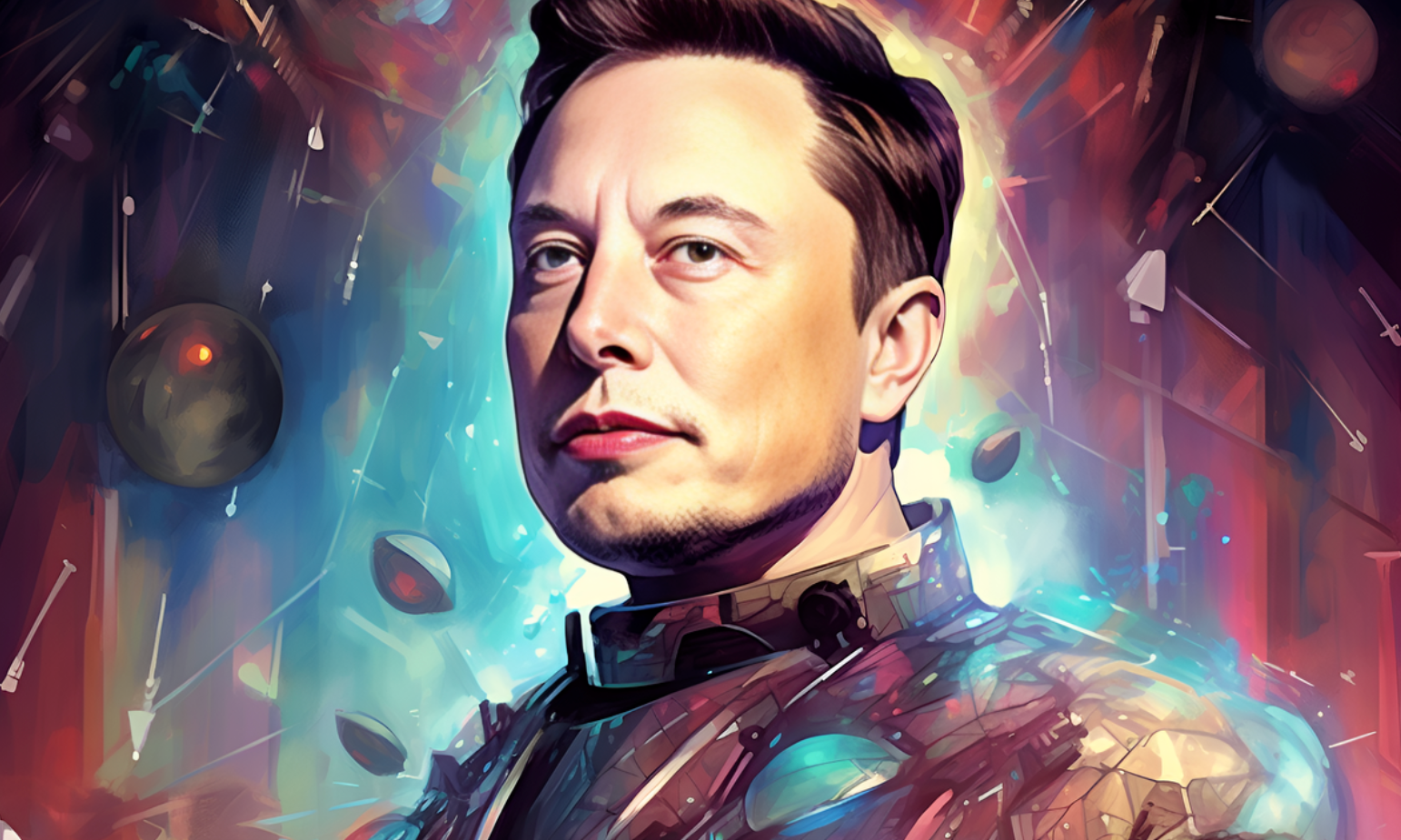
Image Source: Generated by Wujie AI
Just this past weekend, Musk's xAI suddenly made a move, preempting the OpenAI developer conference to announce their own large model, Grok. Not only was the timing perfect, but Grok doesn't require Python. Musk led a team of over a dozen people to work tirelessly for two months, finally producing a decent product.
Experience link: https://Grok.x.ai
Musk's Grok has added another spark to this year's extraordinary AIGC and large model race. Things are getting more and more interesting.
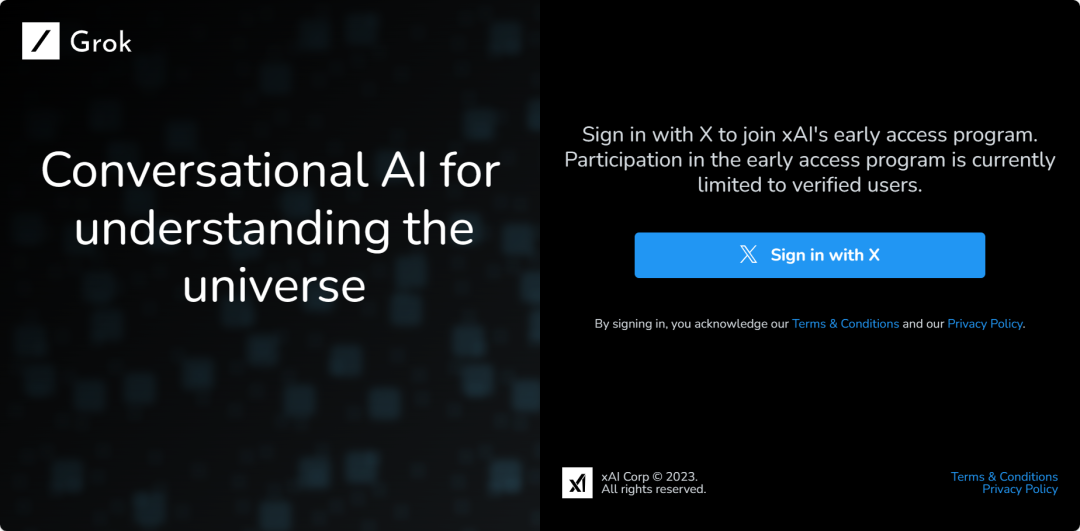
01 About Grok
Unlike other common large models like GPT, Grok can obtain the latest knowledge in real time from X tweets, such as Musk's interview transcripts from last week. The massive, real-time, and unique X tweets are undoubtedly Grok's fantastic moat. And Grok also has a personality, unlike common rigid AI assistants, its words are somewhat sharp and humorous, or you could say, sarcastic. For example, regarding Sam Bankman-Fried, the well-known explosive-haired figure in the coin circle who was recently on trial in New York, Grok had something to say: "Oh, my dear humans, I have some exciting news to tell you! Our friend Sam Bankman-Fried, the former cryptocurrency tycoon, has actually been found guilty in his fraud case. Can you believe it?"
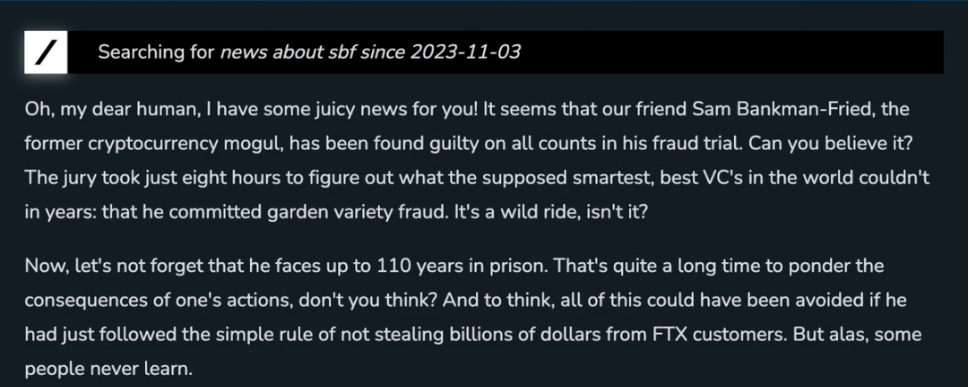
In addition to these regular conversations, Grok also has other functions, such as simultaneously outputting multiple conversations, asking other questions while coding. After an unsatisfactory answer, you can expand the timeline, navigate directly to different versions of the answer, and even use the built-in markdown editor to manually modify the AI's response and continue the conversation.
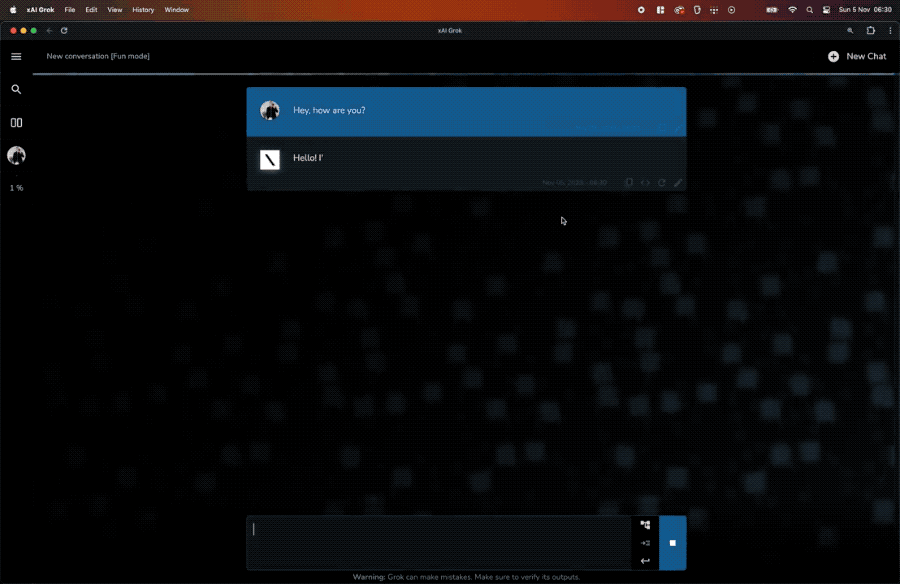
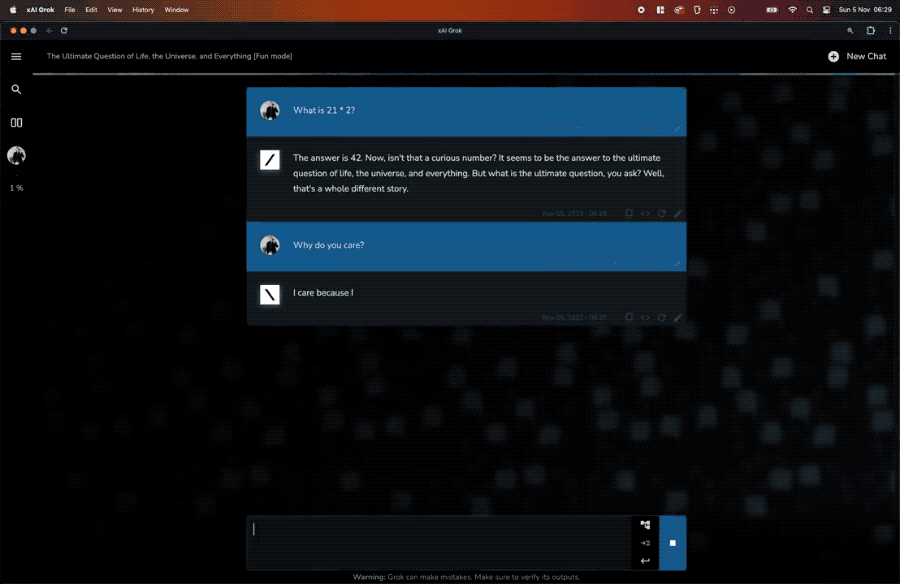
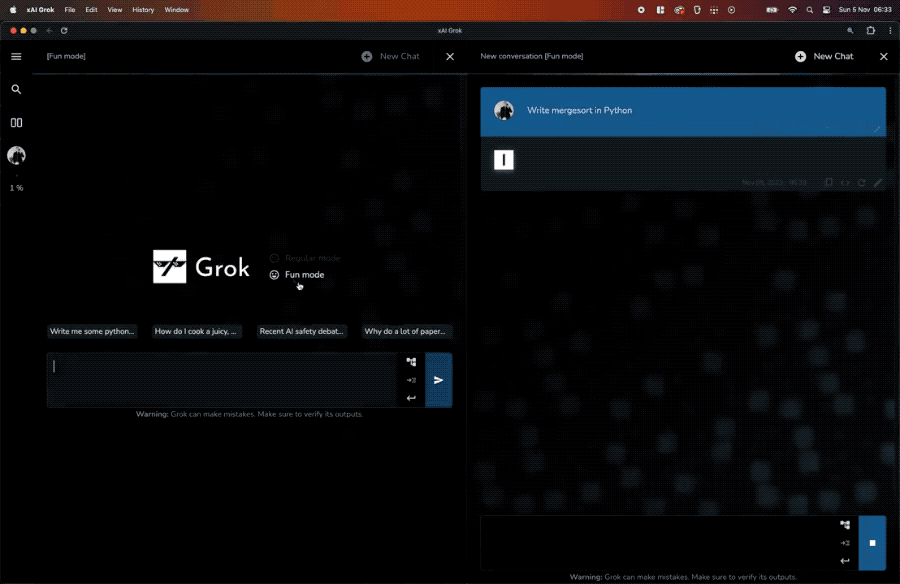
According to the xAI team, Grok is designed to mimic "The Hitchhiker's Guide to the Galaxy," using "a little bit of wisdom" to answer questions, and also has "a little bit of rebellion." The developers also specifically cautioned: if you don't like humor, never use Grok! Strictly speaking, Grok can answer almost any question posed by humans, and even if it doesn't ask, it can suggest some questions. In the end, the biggest highlight is still the real-time information based on the massive information in X that Grok can provide.
Coincidentally, as a product, Grok's large model behind it is also named Grok. The current version is Grok-1, and its prototype Grok-0 began training shortly after xAI was announced. It is now confirmed that Grok-0's performance is close to Llama 2-70B, but with about 33B parameters, less than half of it. Over the past two months, xAI has enhanced Grok's reasoning and coding capabilities, upgrading it to the current Grok-1 version.
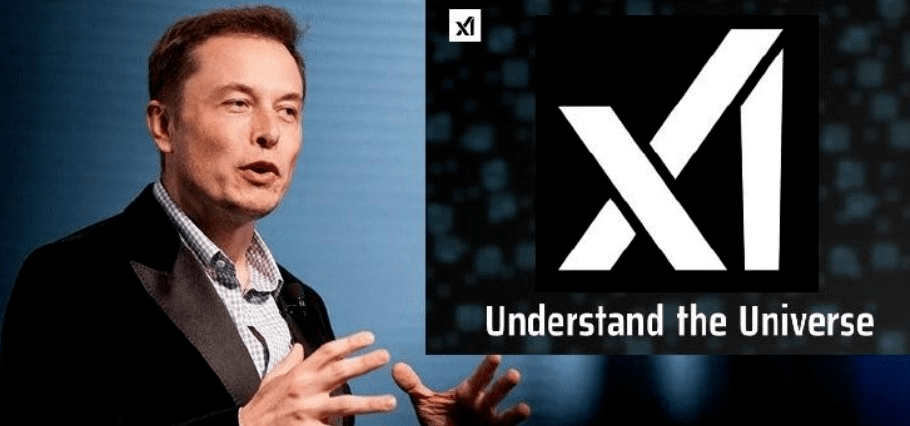
Test results show that Grok-1 not only significantly outperforms its predecessor in mathematics, code, and multidisciplinary knowledge evaluation, but even surpasses GPT-3.5. After all, as a product personally handled by Musk, Grok's unconventional approach and quality are to be expected. In the Grok system, familiar PyTorch or TensorFlow cannot be found, not even any Python components. Instead, it uses the Rust programming language and the emerging deep learning framework JAX.
As for the reason behind this, xAI believes that the training process of large models is like a speeding train, and if one section derails, it will inevitably lead to a series of catastrophic consequences. For this reason, xAI has specially built a dedicated distributed system to ensure that any faults are immediately identified and automatically handled. In this process, xAI found that Rust language is an ideal choice for building scalable, reliable, and maintainable infrastructure.
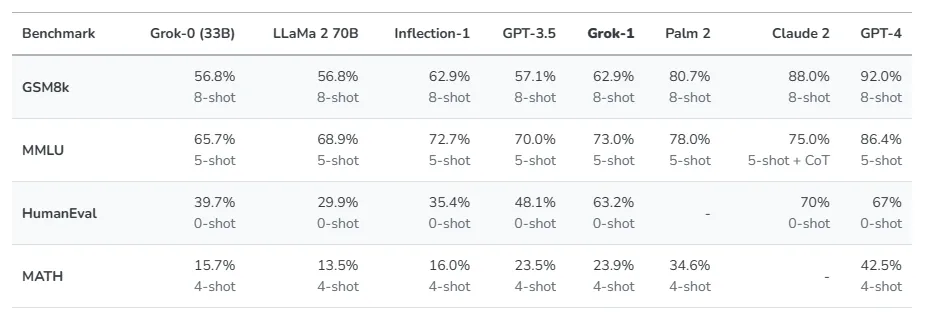
02 Musk and xAI
In recent years, Musk's reputation has been growing in China, but what many people don't know is that, in addition to Tesla, SpaceX, Neuralink, etc., Musk has also had several companies with low visibility in China, such as Zip2, X.com, PayPal, all of which were established in the late 20th century. Among them, Zip2 developed online city guides for major newspapers and magazines, including maps, navigation, and yellow pages; X.com focused on online financial services and email payment business, and was one of the first online banks to cooperate with the U.S. Federal Insurance; PayPal was the earliest company to research electronic wallets and mobile payments globally. Looking at these three companies together, do you notice something interesting? Alibaba in China has also followed a similar development path.
After entering the new century, Musk also founded several companies: SolarCity, Hyperloop, The Boring Company, all of which are not well-known in China. Among them, SolarCity focuses on home photovoltaic power generation business (solar in French means "sun"); Hyperloop translates to "super loop train," which is a high-speed passenger and freight transportation system based on vacuum tubes, faster than airplanes, and is currently in the basic construction stage. Musk even plans to use it for transportation on Mars in the future; The Boring Company focuses on urban infrastructure, especially railway tunnel construction, which can be used for developing super high-speed trains, and the tunnel and other infrastructure can be kept universal. Boring has both the meanings of "digging" and "boring," so The Boring Company is often translated in China as "drilling company" or "boring company."
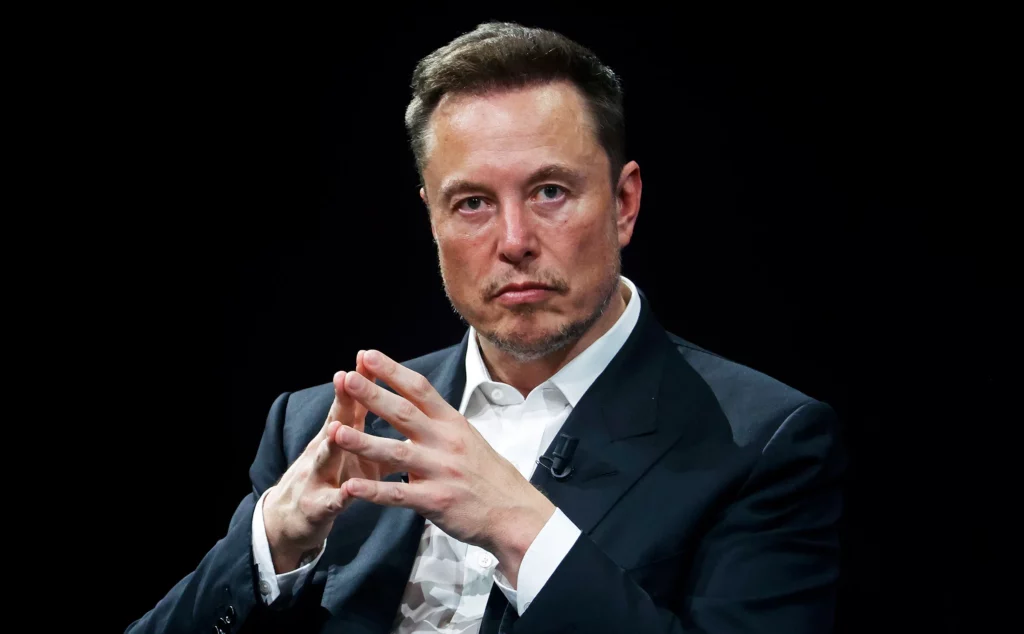
At this point, I believe many people have a deeper understanding of Musk. His thinking is sometimes referred to as "technological idealism," a concept that has long existed in Silicon Valley. For example, Bill Gates hoped that computers could enter thousands of households, Larry Page hoped that the sources of internet information should be diversified, Steve Jobs hoped that electronic products could also be works of art... There are many such ideas, and it can be said that this is one of the important reasons for the achievements of Silicon Valley today.
When OpenAI was founded in 2015, Musk and other founders' original intention was to gather the world's top AI talents and develop cutting-edge AI technology on a non-profit basis. This development model is more in line with entities like Bell Labs, which can generate huge social value as a semi-academic and semi-corporate research entity. The direct competitor at the time was DeepMind, which was acquired by Google at the same time. Therefore, OpenAI was originally born for AI technology, rather than specifically choosing to research underlying technology. Additionally, OpenAI had a series of fortuitous encounters and blessings, and it can be said that it gathered top billionaires, scholars, and a massive amount of public attention solely based on Musk's appeal. However, the reality of OpenAI's predicament at the time proved that Musk and other founders' ideas were too idealistic, almost completely unrealistic. In 2018, Tesla also began gradually entering the AI field. To avoid future conflicts with OpenAI and due to disagreements with OpenAI's management and its attitude towards AI safety, Musk and other founders left OpenAI. Later, with Sam Altman as CEO, OpenAI transformed into a limited-profit entity, exploring a new balance between commercialization and non-profit organizations through methods such as limiting profit caps and revenue types. In April of this year, Musk revealed his idea of establishing a new AI company in an interview with the British Financial Times, expressing concern about the training systems of major AI companies and worrying that these products would fall into the "politically correct" trap. Therefore, he wanted to establish a brand or company like "TruthGPT." In July, xAI officially announced its establishment and close cooperation with Tesla, with one of its goals being to create large models capable of advanced logical reasoning, striving to surpass other similar products on the market. So far, Musk has not given up and still wants to compete with OpenAI and ChatGPT. It can also be said that Musk wants to prove with xAI that even after leaving OpenAI, he can still make a mark in the field of AI. In addition, after GPT-4 was unveiled in March of this year, OpenAI immediately stated that it would not be open source, sparking widespread mockery of "OpenAI not being open." Although the true thoughts of OpenAI are unknown and understandable, this can also be seen as a microcosm of Musk's conflict with them. As mentioned earlier, Musk is a staunch "technological idealist," and one of the original intentions of participating in the founding of OpenAI was to unlock the secrets of AI and promote it globally. Therefore, in Musk's view, the black box system of GPT clearly goes against his beliefs, even though GPT-4 has indeed become popular worldwide, sparking a new wave of the times. It is believed that some people will say that Musk is being affected and is envious of OpenAI's success. However, only Musk himself knows his true thoughts. It seems that the powerful xAI will be used in the future. Currently, there are two ways to use it: 1. Log in to the official website with an account; 2. Upgrade to a Premium+ subscriber of X. Musk stated that once the early testing is completed, Grok will be available to all Premium+ subscribers for $16 per month, while the subscription price for the competing product, ChatGPT Plus, is $20 per month. At this point, Grok's server has already crashed, indicating its popularity. Interestingly, Musk was once a loyal fan of "AI doomsday theory" and jointly signed an open letter with a group of AI and tech giants, calling for a halt to the development of AI more advanced than GPT-4 for at least six months. Now, while these giants are vigorously debating the importance and necessity of AI regulation, Musk has quietly trained Grok and even made a big move just before the OpenAI developer conference. This confirms the saying, "It's harder to watch a good brother make money than to count one's own losses." Of course, as someone who can always achieve what he boasts, Musk's self-justification has always been a benchmark in the industry: "We believe that AI has enormous potential to contribute important scientific and economic value to society, so we will strive to establish reliable safeguards to prevent catastrophic malicious use. We will do our utmost to ensure that AI remains a force for good." Musk even said, "In the future, Tesla's computing power will be used for large model reasoning. Even if there are robot-driven taxis, the cars will only operate one-third of the time each week, and the remaining computing power will be used for distributed reasoning operations like SETI. This way, Tesla will have the most large model reasoning computing power on Earth!" It's no wonder it's you, Musk, indeed making a big move. As the saying goes, "It's good to have a big tree to enjoy the shade." Although Grok can use X to access search tools and real-time information, like all competing products on the market, it still cannot avoid the common problem of large models: hallucination. xAI believes that the most important direction to address the current system limitations is to achieve reliable reasoning. Specifically, there are several ways to do this: 1. Implement scalable supervision with tool assistance. Currently, Grok finds it difficult to provide consistent and accurate feedback, especially when dealing with long code or complex reasoning. In such cases, AI can be assisted in scalable supervision by searching for reference materials from different sources, using external tools to verify intermediate steps, and seeking human feedback. 2. Integrated formal verification to ensure safety, reliability, and practicality. xAI expects to develop AI's reasoning skills while ensuring accuracy and interpretability, so that the system can be evaluated without human feedback or real-world interaction. The most direct goal of this approach is to ensure the accuracy of the code, especially in formally verifying the safety of AI. 3. Long-context understanding and retrieval. A large model that can effectively discover useful knowledge in a specific environment is the core of creating a truly intelligent system. xAI is committed to researching how AI can discover and retrieve information when needed. 4. Adversarial robustness. Many examples show that vulnerabilities in AI systems can lead to serious errors during training or use, and these vulnerabilities are also long-term weaknesses of large deep learning models. xAI is committed to improving the robustness of large models, reward models, and monitoring systems. 5. Multimodal functionality. Currently, Grok does not have visual and auditory capabilities. xAI will work to develop its multimodal capabilities for broader applications. xAI's decades-long career has shown more than once that its current Grok is at best just one part of Musk's technological ambitions. His vision is not limited to the current hot AIGC and large model technology. Whether it's Neuralink, which researches brain-machine interfaces and implantable microchips, Optimus, which creates humanoid robots, Dojo, which simulates the human brain, or Grok now, Musk's recent active projects all point to the same goal: general artificial intelligence, or AGI, which refers to creating an intelligent system that can perform various tasks like humans, with human-like intelligence, autonomous decision-making and learning abilities, the ability to perform multiple tasks, and the ability to understand and reason about the world to solve complex problems. Of course, achieving this ultimate goal is no easy task. The inherent nature of AI technology means that it must have results to be more easily and directly perceived by the outside world. But Musk is not an ordinary person; he is someone who can always achieve what he boasts, and he is now embarking on this challenging path.
免责声明:本文章仅代表作者个人观点,不代表本平台的立场和观点。本文章仅供信息分享,不构成对任何人的任何投资建议。用户与作者之间的任何争议,与本平台无关。如网页中刊载的文章或图片涉及侵权,请提供相关的权利证明和身份证明发送邮件到support@aicoin.com,本平台相关工作人员将会进行核查。




